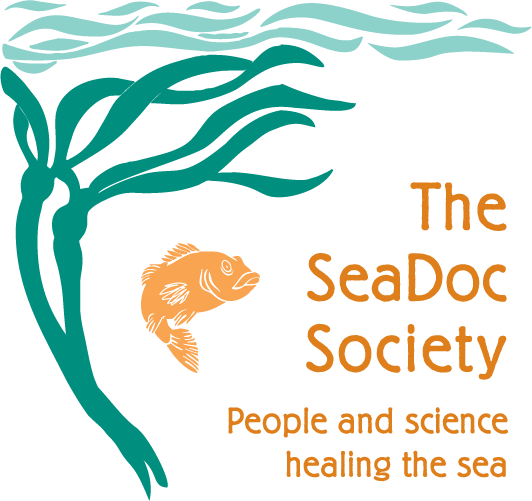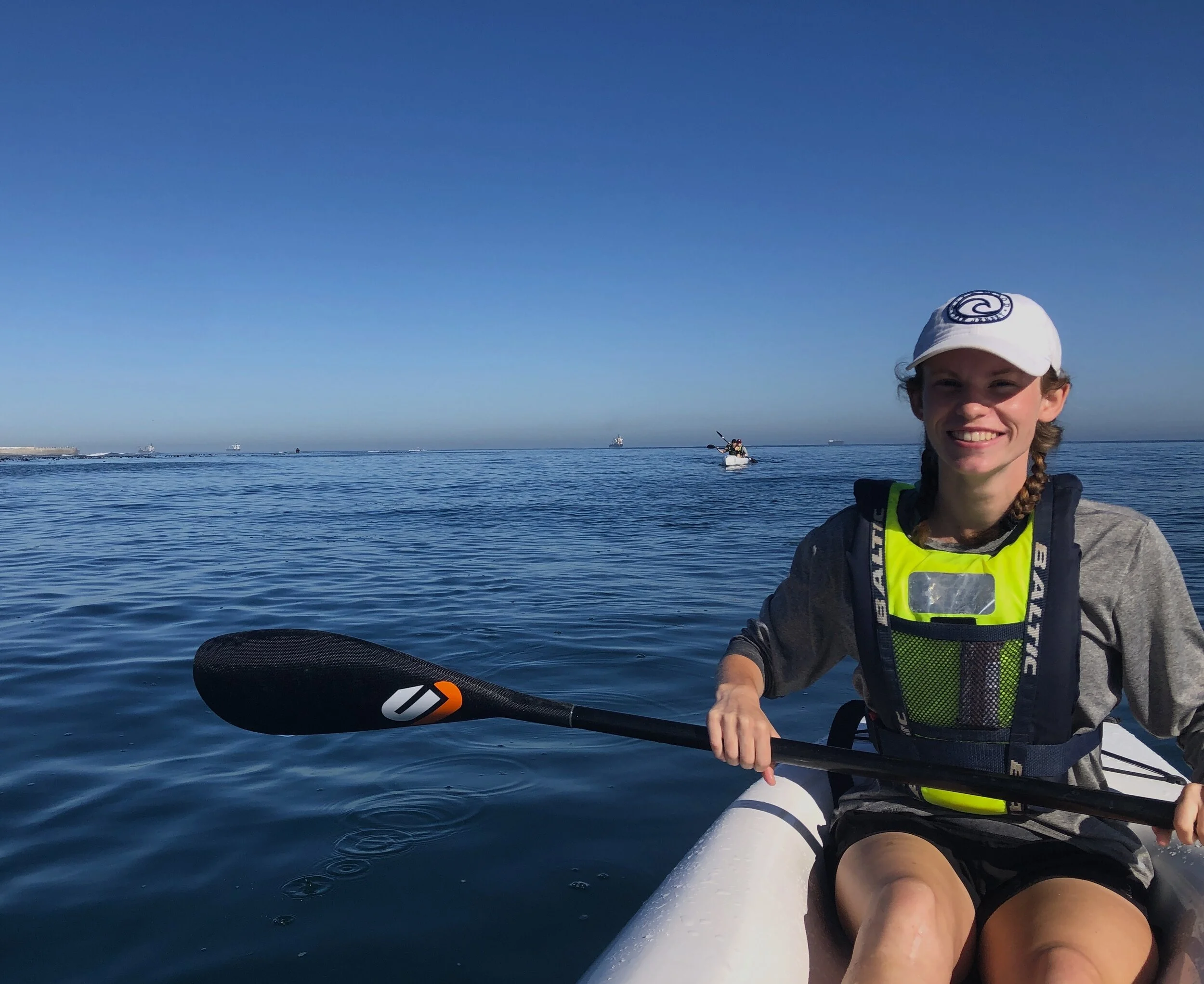Sara Doyle is a senior at Loyola University in Baltimore, Maryland where she studies Global Studies. This past summer she completed a “remote” internship with the SeaDoc Society during the COVID19 pandemic evaluating the relationship between the environment and marginalized communities. She graduates in May 2021 and is looking for a job in the field of Sustainability, so let her know if you have any job leads: sjdoyle@loyola.edu. Bold numbers in this following text refer to the citations you can find below the piece.
By Sara Doyle
Environmental degradation disproportionally affects racially, socially, and economically marginalized people; in the Salish Sea and world-wide.1 I became more aware of this during my study abroad experience in South Africa, only to later realize it was occurring in my own backyard.
I remember walking into a bathroom at the University of Cape Town, placing my hands under the water spout to rinse them, and to my surprise, instead of a cold splash of water, the spout merely misted my hands. I then noticed a poster that said, “Be Aware of Water Use and Stop Day Zero!” After severe droughts in 2015 and 2016, in 2017 the City of Cape Town decided to enact a water-shortages disaster plan and announce the possibility of Day Zero, a day when all water taps would be turned off. The threat of no water caused political unrest.2 Wealthier citizens wanted to privatize water systems to secure their water source, while activists pressured the City of Cape Town to create more spaces for the public to access water. The infrastructure of water pipelines in Cape Town favors the wealthy and does not give sufficient access to communities in poverty.2 Impoverished black communities, located on the outskirts of Cape Town, faced a greater threat of water insecurity than wealthier whites.
As a white American, I recognized my privilege in my accessibility to clean water and became more aware of water crises and other outcomes of environmental degradation that are happening around the world. Back home in Baltimore, I learned that impoverished neighborhoods, burdened with more pollutants, have higher than average rates of asthma.3 In 2009, a large corporation called Energy Answers International, applied to construct a waste incinerator in the city’s Curtis Bay neighborhood. Not only was this incinerator to be placed in the most polluted zip code in Baltimore, but it was also planned to be located less than a mile from Benjamin Franklin High School.3 Due to student protests and outreach to inform neighbors of the plans for the incinerator, the project was halted and ultimately relocated.3
In the Salish Sea, the relationship between toxicants in salmon, salmon consumption, and the rights of the Coast Salish is another example of environmental degradation’s inequitable effect.
The Coast Salish have lived in the Salish Sea since time immemorial and their culture and salmon are intertwined.4 These tribes and First Nations have lost access to salmon and faced salmon declines since the first settlers arrived in the Pacific Northwest and began building communities on tribal fishing grounds, limiting tribal fishing opportunities, overharvesting salmon, and altering salmon habitat.5
In 1964, while exercising a treaty right codified in the 1855 treaties, Washington tribal members were arrested for fishing outside of their reservations. In 1968, the U.S. Supreme Court in Puyallup Tribe v. Department of Game of Washington upheld that the state had the right to regulate Native fishing in the interest of conservation.6 The tribes protested these regulations. Relief came to Coast Salish in 1974 in the Federal case of United States vs State of Washington, when Judge George Hugo Boldt upheld Treaty rights as the highest law of the land.
reserving 50% of the annual catch to treaty tribes and protecting their rights to act as sovereigns and to be co-managers of the fisheries.7 This decision reshaped the relationship between tribal communities and non-tribal fisheries, but the battle continues.
In May 2019 the Environmental Protection Agency (EPA) decided to roll back its previous decision to enact more protective water quality standards for the State of Washington, which were helping restore water quality and reduce toxicants such as PCBs (Polychlorinated biphenyls) in fish. Due to toxicants found in salmon, the EPA recommended a consumption rate for all citizens in the Salish Sea Community.8 However, limiting the consumption of salmon significantly impacts the Coast Salish more than non-tribal members. For example, the Lummi tribe consumes more salmon than the average U.S. citizen. Therefore, as articulated in the Lummi Nation Seafood Consumption Study, “the estimates for seafood consumption from national surveys that are recommended for use by the EPA are not applicable to the Lummi Nation” who use salmon for sustenance and ceremonial purposes.8 Environmental policy that “provides less protection for a population [at higher risk] and leads to more exposure to harmful toxicants is undoubtably an environmental justice issue.”9
Additionally, Coast Salish consumption of salmon was previously much higher than it is today. Due to pollutants and dwindling salmon populations, consumption rates for Coast Salish have significantly diminished. According to Judge Boldt in the United States. v The State of Washington ruling, salmon is a staple in Coast Salish diets, and that on average these communities consumed about 621.4 grams a day. Today, consumption has dwindled, but not by choice. According to the Lummi Nation Seafood Consumption Study the Suquamish tribe, for example, consume on average 213.85 grams a day.8 Currently the State of Washington recommends people limit their Chinook salmon consumption to two to three servings a week.10 For a 160 pound person, this means 226 grams a meal, for a maximum of 678 grams a week or 97 grams a day.
Contaminants aside, having less salmon to eat in itself is unjust to the Coast Salish. As explained by the Swinomish Indian Tribal Community, “Employed in cultural and religious ceremonies, incorporated into the common diet, and sold to support families on the Reservation, the current ecological status and fate of these species is of utmost interest to the Tribe.”11 The high levels of PCBs and methylmercury in salmon have resulted in fish consumption advisories that are unrealistic for tribal communities.12 Asking the Coast Salish, a culture that is intertwined with salmon, to eat less of it, amounts to a human rights issue that can only be rectified by recovering salmon and cleaning up the Salish Sea. This will be good for the Coast Salish, and also for non-tribal fishers and consumers of salmon, as well as for the salmon and the 138 species of vertebrates that depend on them.13
Restoring ecosystems like the Salish Sea is not a social-elitist action to benefit wealthy people who recreate here or have waterfront homes. It is a moral imperative for the betterment of us all, especially those marginalized racially, socially or economically. The Black Lives Matter Movement is calling for more just actions and more education on racial inequalities. We need to echo this call for all racially, socially and economically disadvantaged communities throughout the Salish Sea and the world. To paraphrase Nick Hanauer and Eric Liu from their book The Gardens of Democracy, “when we’re all better off, we’re all better off.”14
Acknowledgements
I would like to thank J. Gaydos, B. Friel, J. Cox, J. Donatuto and M. Hatch for their edits, ideas and comments that helped improve this blog post.
Literature Cited
1. Philip, Dawn. Reisch, Michael. “Rethinking Social Work’s Interpretation of ‘Environmental Justice’: From Local to Global” Social Work Education, University of Maryland, vol. 34
2. Robbins, Steven “Day Zero, Hydraulic Citizenship and the Defense of the Commons in Cape Town: A Case Study of the Politics of Water and its Infrastructures (2017-2018)” Journal of Southern African Studies, Stellenbosch University, 2019
3. Boone, Christopher G., “An Assessment and Explanation of Environmental Inequity in Baltimore,” Urban Geography, volume 23, May 2013
4. Vierros, Marjo. “Considering Indigenous Peoples and Local Communities Governance of the Global Ocean Commons” Science Diet, Marine Policy, Volume 119, Sept 2020
5. Blumm, Michael, C. “Indian Treaty Fishing Rights and the Environment: Affirming the Right to Habitat Protection and Restoration,” Washington Law Review, Washington Law Review Association, Vol. 92 Issue 1, March 2017
6. Dougherty, Phil. “United States v. Washington (aka the. Boldt Decision),” HistoryLink, August 2020. https://www.historylink.org/File/21084
7. Combs, Mariel J. “United States v. Washington: The Boldt Decision Reincarnated,” Environmental Law, Lewis and Clark Law School, Vol. 29, 1999
8. Freimund, Jeremy. Lange, Monika. Dolphin, Craig. “Lummi Nation Seafood Consumption Study,” Agency for Toxic Substances and Disease Registry, Environmental Protection Agency, Lummi Indian Business Council, August 2012.
9. Nicole, Wendee. “Meeting the Needs of the People,” Spheres of Influence. Environmental Health Perspectives, November-December 2013
10. Washington State Department of Health, Healthy Fish Guide https://www.doh.wa.gov/CommunityandEnvironment/Food/Fish/HealthyFishGuide (accessed October 5, 2020)
11. National Environmental Justice Advisory Council Fish Consumption and Environmental Justice, November 2002,” National Environmental Justice Advisory Council, Environmental Protection Agency, Seattle, Washington, November 2002. A Federal Advisory Committee to the US EPA
12. “Lawsuit Challenges EPA Rollback of Human Health Water Standards,” Puget Soundkeeper, Seattle, Washington, June 2020
13. Cederholm, John et. al. “Pacific Salmon and Wildlife: Ecological Contexts, Relationships, and Implications for Management,” Special Edition Technical Report, Wildlife-Habitat Relationships in Oregon and Washington. Washington Department of Fish and Wildlife, Olympia, Washington.
14. Hanauer, Nick. Liu, Eric. Gardens of Democracy: A New American Story of Citizenship, the Economy, and the Role of Government, Sasquatch Books, Seattle, WA, 2011.
Note: Our mission is to empower people—regardless of economic status or background—to join us in the effort to conserve this special place. We invest extra time and money to make this possible because we believe equal access to scientific data is important. If you are unable to find any of the above scientific citations for free, please contact us at seadoc@seadocsociety.org and we will email them to you. We are unable to provide free electronic copies of books due to legal copyright issues.

